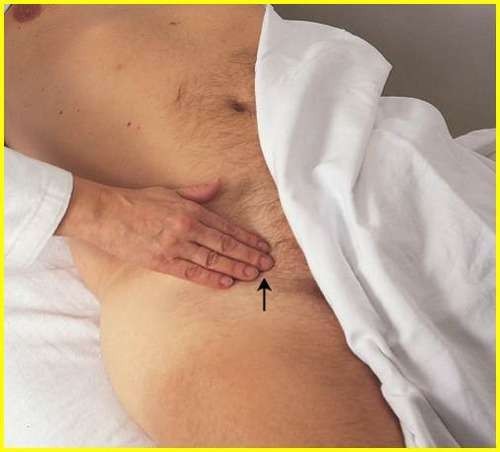A nurse in an emergency department is caring for a client following a motor-vehicle crash. The client’s Glasgow coma scale rating is 15.
Which of the following findings should the nurse expect?
The client withdraws from pain.
The client is unable to obey commands.
The client opens eyes to sound.
The client is oriented times three.
The Correct Answer is D
This means that the client knows who they are, where they are, and what time it is. This indicates a high level of consciousness and a normal Glasgow coma scale (GCS) rating of 15.
Choice A is wrong because the client withdraws from pain.
This means that the client reacts to a painful stimulus by pulling away from it. This indicates a lower level of consciousness and a GCS rating of 4 for motor response.
Choice B is wrong because the client is unable to obey commands.
This means that the client does not follow simple instructions such as moving a limb or opening their eyes. This indicates a lower level of consciousness and a GCS rating of 1 or 2 for motor response.
Choice C is wrong because the client opens eyes to sound.
This means that the client does not open their eyes spontaneously, but only when they hear a loud noise. This indicates a lower level of consciousness and a GCS rating of 3 for eye opening.
The Glasgow coma scale is a clinical tool used to assess the level of consciousness of a person after a brain injury.
It consists of three tests: eye opening, verbal response, and motor response.
Each test has a score range from 1 to 6, with higher scores indicating higher levels of consciousness. The total score ranges from 3 to 15, with lower scores indicating higher risk of death.
Nursing Test Bank
Naxlex Comprehensive Predictor Exams
Related Questions
Correct Answer is {"A":{"answers":"A"},"B":{"answers":"B"},"C":{"answers":"A"},"D":{"answers":"A"},"E":{"answers":"B"}}
Explanation
Answer is… Stay with the client for the first 15 min of the transfusion and Document the blood product transfusion in the client’s medical record are indicated nursing actions for the client. Obtain the first unit of packed RBCs from the blood bank is also indicated, but it should be done before starting the transfusion. Titrate the rate of infusion to maintain the client’s blood pressure at least 90/60 mm Hg and Start an IV bolus of lactated Ringer’s solution are not indicated nursing actions for the client.
Explanation:.
- Staying with the client for the first 15 min of the transfusion is indicated because this is when most adverse reactions occur and the nurse should monitor the client’s vital signs and symptoms closely.
- Documenting the blood product transfusion in the client’s medical record is indicated because this is part of the legal and ethical responsibility of the nurse and it provides a record of the type, amount, duration, and outcome of the transfusion.
- Obtaining the first unit of packed RBCs from the blood bank is indicated because this is part of the preparation for the transfusion and it ensures that the blood product is compatible, fresh, and available. However, this should be done before starting the transfusion, not after.
- Titrating the rate of infusion to maintain the client’s blood pressure at least 90/60 mm Hg is not indicated because this may cause fluid overload or hemolysis in the client who already has a low blood pressure and a high heart rate. The rate of infusion should be based on the client’s condition, weight, and response to the transfusion, not on a fixed target.
- Starting an IV bolus of lactated Ringer’s solution is not indicated because this may cause electrolyte imbalance or hemolysis in the client who already has a positive H. pylori test and a history of gastrointestinal bleeding. The only fluid that should be infused with blood products is 0.9% NaCl (normal saline) because it has a similar osmolarity and pH as blood and it prevents clotting or hemolysis.
Correct Answer is C
Explanation

This is because coarctation of the aorta is a congenital condition where the aorta is narrow, usually in the area where the ductus arteriosus inserts. This causes a decrease in blood flow to the lower body, resulting in weak or absent pulses in the femoral arteries.
The other choices are incorrect for the following reasons:
Choice A is not a typical sign of coarctation of the aorta.
Nosebleeds can be caused by many factors, such as dry air, allergies, trauma, or bleeding disorders.
Choice B is also not a common finding in coarctation of the aorta. In fact, patients with this condition may have high blood pressure in the upper extremities due to the increased resistance of the narrowed aorta.
Choice D is not directly related to coarctation of the aorta.
Increased intracranial pressure can be caused by various conditions that affect the brain, such as head injury, stroke, infection, or tumor.
Normal ranges for blood pressure and pulse vary depending on age, sex, and health status. However, some general guidelines are:
- Blood pressure: less than 120/80 mmHg for adults; less than 95/65 mmHg for infants.
- Pulse: 60 to 100 beats per minute for adults; 100 to 160 beats per minute for infants.
Whether you are a student looking to ace your exams or a practicing nurse seeking to enhance your expertise , our nursing education contents will empower you with the confidence and competence to make a difference in the lives of patients and become a respected leader in the healthcare field.
Visit Naxlex, invest in your future and unlock endless possibilities with our unparalleled nursing education contents today
Report Wrong Answer on the Current Question
Do you disagree with the answer? If yes, what is your expected answer? Explain.
Kindly be descriptive with the issue you are facing.
